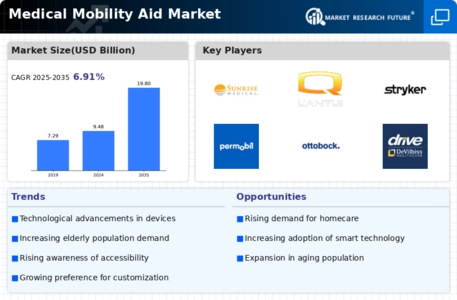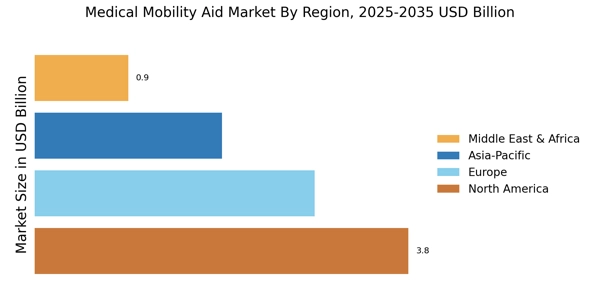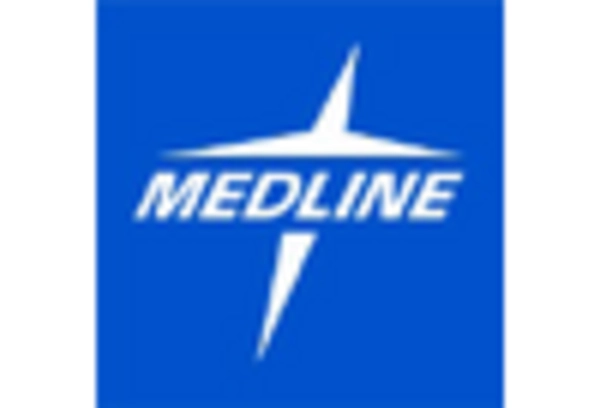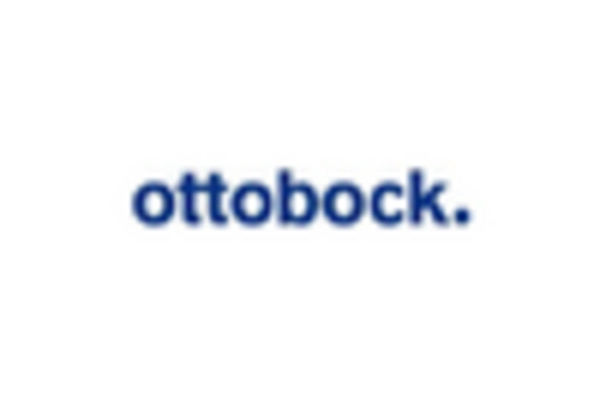Medical Mobility Aids Market Summary
As per MRFR analysis, the Medical Mobility Aid Market was estimated at 9.48 USD Billion in 2024. The Medical Mobility Aid industry is projected to grow from 10.14 USD Billion in 2025 to 19.77 USD Billion by 2035, exhibiting a compound annual growth rate (CAGR) of 6.91 during the forecast period 2025 - 2035.
Key Market Trends & Highlights
The Medical Mobility Aid Market is experiencing robust growth driven by technological advancements and demographic shifts.
- Technological integration is reshaping the Medical Mobility Aid Market, enhancing user experience and functionality.
- North America remains the largest market, while the Asia-Pacific region is emerging as the fastest-growing area for mobility aids.
- Wheelchairs dominate the market, yet mobility scooters are witnessing the most rapid growth in demand.
- The rising incidence of disabilities and increased government initiatives are key drivers propelling market expansion.
Market Size & Forecast
| 2024 Market Size | 9.48 (USD Billion) |
| 2035 Market Size | 19.77 (USD Billion) |
| CAGR (2025 - 2035) | 6.91% |
Major Players
Invacare Corporation (US), Drive DeVilbiss Healthcare (US), Permobil (SE), Sunrise Medical (US), Ottobock (DE), Medline Industries, Inc. (US), Karma Mobility (TW), Pride Mobility Products Corporation (US), GF Health Products, Inc. (US)


















Leave a Comment